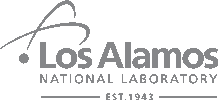Light Water Reactor Sustainability
Sustaining National Nuclear Assets
Newsletter Articles

January 2025
With Help from AI, Advanced X-Ray Technology can Measure Aged Concrete's Strength



January 2025
Co-location of Hydrogen Plants and Other Industrial Plants Near Nuclear Reactors

January 2025
Welcome Shawn St. Germain as the Deputy Pathway Lead for the Physical Security Pathway
Technical Reports
Advanced microstructural and electrochemical quantification of irradiated stainless steels
September 2024
Development of New Reactor Core Configuration for Power Uprate – Fuel Reload & Heat Processing Analyses, Core Design, System Safety Assessments, and Fuel Performance Analyses
September 2024
Flexible Plant Operation and Generation: Hazards and Probabilistic Risk Assessments of a Light-Water Reactor Coupled with Industrial Facilities
September 2024
First Phase Consensus Roadmap for Development of Condition-Based Cable Reliability Assurance, PNNL-36630
September 2024
Human Unimodel for Nuclear Technology to Enhance Reliability (HUNTER 3.0) User Guide, INL/RPT-24-80110
September 2024
Evaluation of Clamshell Current Coupler for Online
Frequency Domain and Spread Spectrum Time Domain Reflectometry to Detect Anomalies in Energized Cables
September 2024
Effect of thermal aging on microstructure and stress corrosion cracking behavior of an Alloy 152 1st layer butter weldment
September 2024
An Evaluation of The Dynamic Physical Security Risk Assessment Methodology for Fleet-Wide Applications
September 2024

